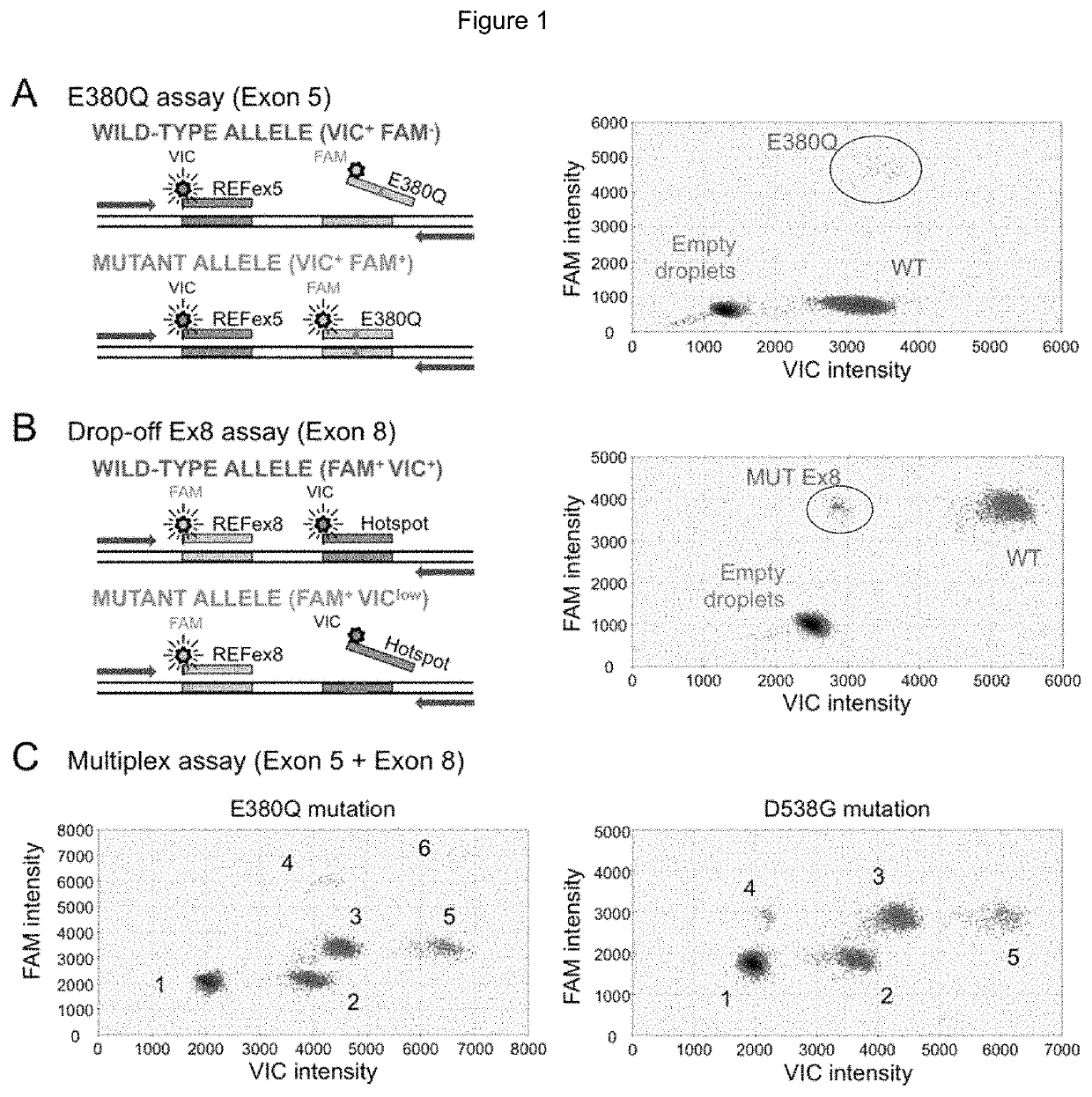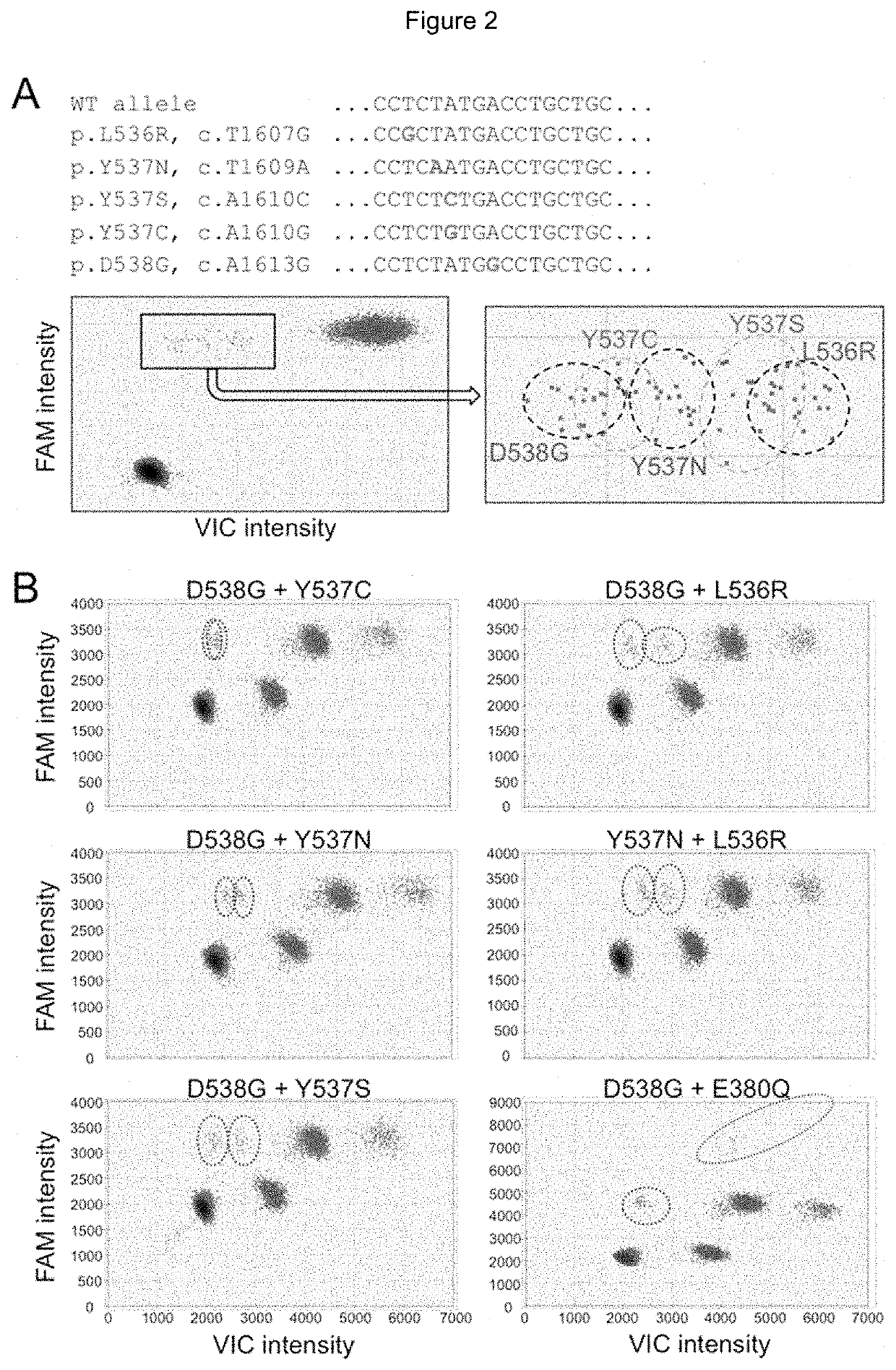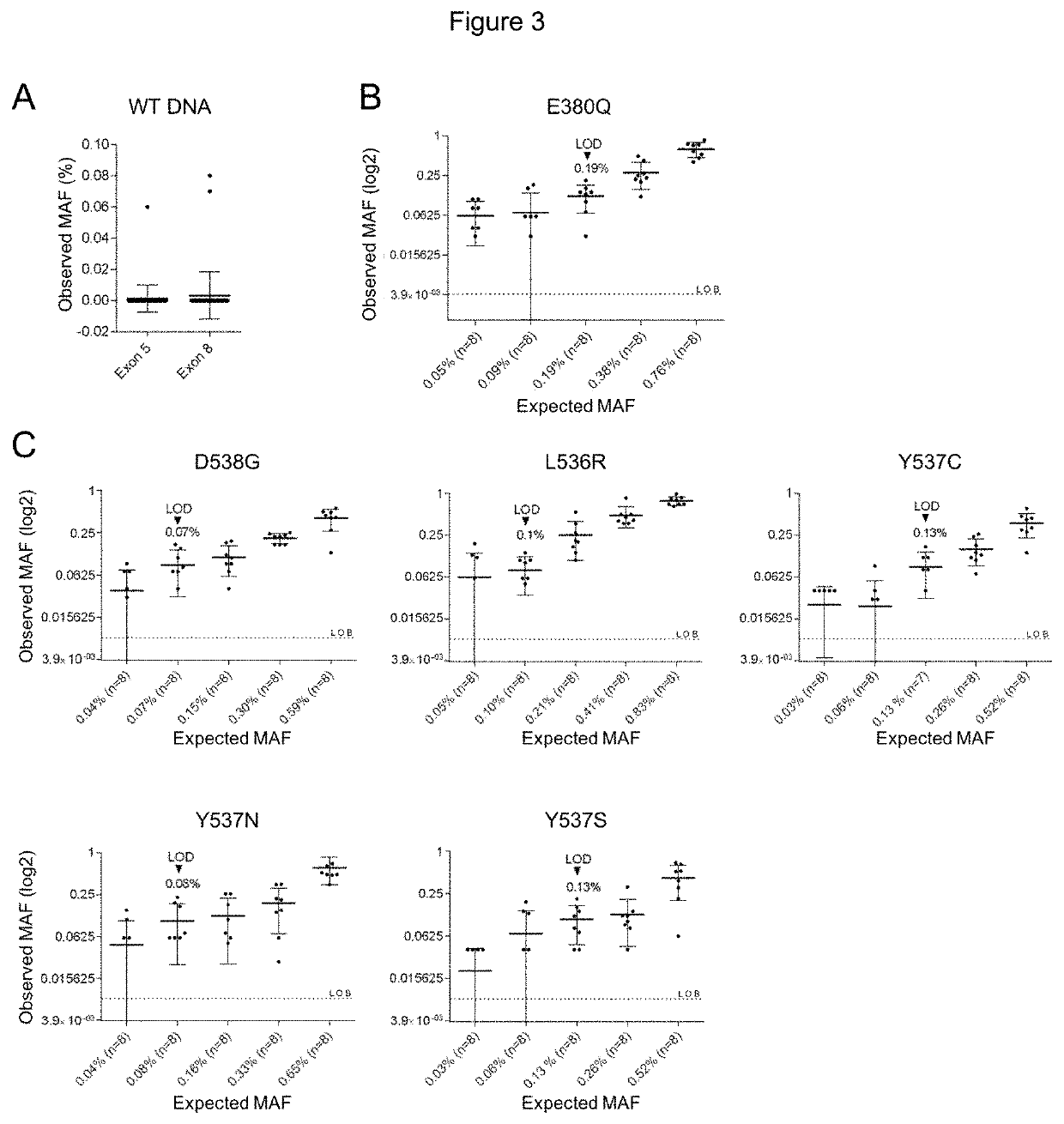Method for Identifying One or More Mutations in a Hotspot Mutation Sequence
a technology of hotspot mutation and sequence, which is applied in the field of method for identifying one or more mutations in a hotspot mutation sequence, can solve the problems of invasive metastatic cancer, inacceptable to many patients, and difficult to identify the mutation, and achieve the effect of avoiding recurrence, avoiding recurrence, and avoiding recurren
- Summary
- Abstract
- Description
- Claims
- Application Information
AI Technical Summary
Benefits of technology
Problems solved by technology
Method used
Image
Examples
examples
Material and Methods
[0180]Droplet digital PCR assay
TaqMan® Probes and Primer Design
[0181]For the E380Q mutation in exon 5, the assay used a probe specifically targeting the E380Q mutation (E380Q probe, FAM-labeled) and a reference probe (REFex5 probe, VIC-labeled) annealing to an adjacent invariant region (FIG. 1A). For the clustered hotspot mutations in exon 8, a drop-off assay was designed using a probe targeting the WT sequence of codons 536, 537 and 538 where mutations are likely to be found (Hotspot probe, VIC-labeled) and a reference probe (REFex8 probe, FAM-labeled) annealing to an adjacent invariant region (FIG. 1B). For compatibility with ctDNA detection, primers were designed to generate amplicons under 150 bp (101 bp and 125 bp for exons 5 and 8, respectively). The following primers were used to amplify (a) exon 5: Fwd primer: 5′-TTGCTTGTTTTCAGGCTTTGTGGA-3′; Rev primer 5′-AGCGCCAGACGAGACCAATCAT-3′; and (b) exon 8: Fwd primer: 5′-ACAGCATGAAGTGCAAGAACGT-3′; Rev primer 5′-TG...
PUM
| Property | Measurement | Unit |
|---|---|---|
| Electrical resistance | aaaaa | aaaaa |
Abstract
Description
Claims
Application Information
 Login to View More
Login to View More - R&D
- Intellectual Property
- Life Sciences
- Materials
- Tech Scout
- Unparalleled Data Quality
- Higher Quality Content
- 60% Fewer Hallucinations
Browse by: Latest US Patents, China's latest patents, Technical Efficacy Thesaurus, Application Domain, Technology Topic, Popular Technical Reports.
© 2025 PatSnap. All rights reserved.Legal|Privacy policy|Modern Slavery Act Transparency Statement|Sitemap|About US| Contact US: help@patsnap.com



